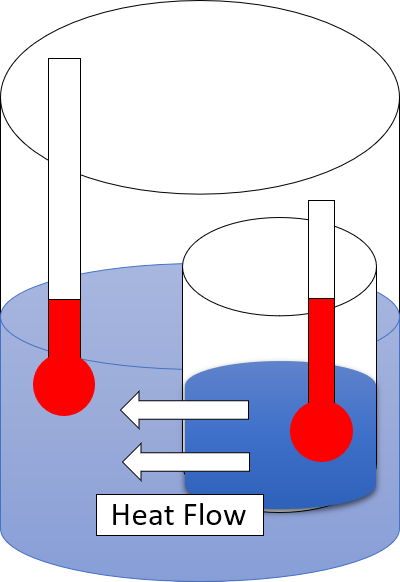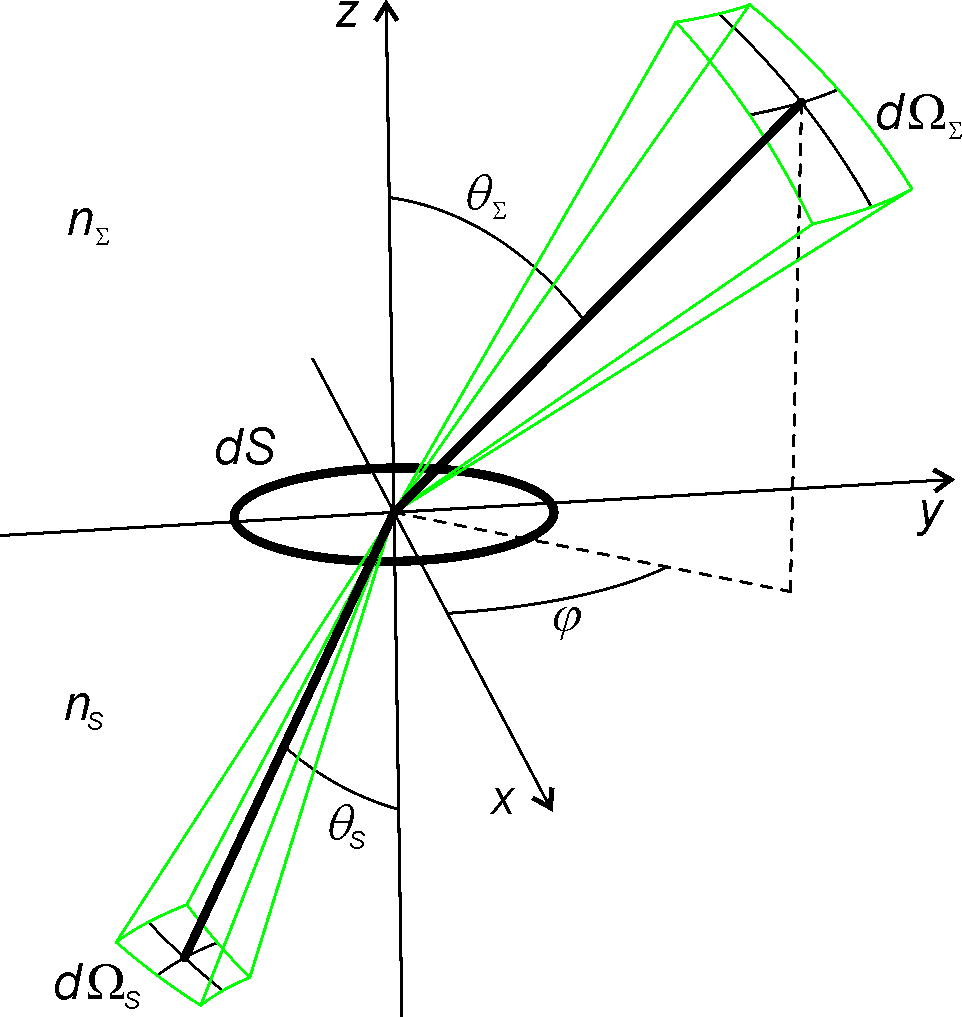|
Optical Extent
Etendue or étendue (; ) is a property of light in an optical system, which characterizes how "spread out" the light is in area and angle. It corresponds to the beam parameter product (BPP) in Gaussian beam optics. Other names for etendue include acceptance, throughput, light grasp, light-gathering power, optical extent, and the AΩ product. ''Throughput'' and ''AΩ product'' are especially used in radiometry and radiative transfer where it is related to the view factor (or shape factor). It is a central concept in nonimaging optics.Roland Winston et al.,, ''Nonimaging Optics'', Academic Press, 2004 Matthew S. Brennesholtz, Edward H. Stupp, ''Projection Displays'', John Wiley & Sons Ltd, 2008 From the source point of view, etendue is the product of the area of the source and the solid angle that the system's entrance pupil subtends as seen from the source. Equivalently, from the system point of view, the etendue equals the area of the entrance pupil times the solid angle ... [...More Info...] [...Related Items...] OR: [Wikipedia] [Google] [Baidu] |
Light
Light or visible light is electromagnetic radiation that can be perceived by the human eye. Visible light is usually defined as having wavelengths in the range of 400–700 nanometres (nm), corresponding to frequencies of 750–420 terahertz, between the infrared (with longer wavelengths) and the ultraviolet (with shorter wavelengths). In physics, the term "light" may refer more broadly to electromagnetic radiation of any wavelength, whether visible or not. In this sense, gamma rays, X-rays, microwaves and radio waves are also light. The primary properties of light are intensity, propagation direction, frequency or wavelength spectrum and polarization. Its speed in a vacuum, 299 792 458 metres a second (m/s), is one of the fundamental constants of nature. Like all types of electromagnetic radiation, visible light propagates by massless elementary particles called photons that represents the quanta of electromagnetic field, and can be analyzed as both waves and par ... [...More Info...] [...Related Items...] OR: [Wikipedia] [Google] [Baidu] |
Refractive Index
In optics, the refractive index (or refraction index) of an optical medium is a dimensionless number that gives the indication of the light bending ability of that medium. The refractive index determines how much the path of light is bent, or refracted, when entering a material. This is described by Snell's law of refraction, , where ''θ''1 and ''θ''2 are the angle of incidence and angle of refraction, respectively, of a ray crossing the interface between two media with refractive indices ''n''1 and ''n''2. The refractive indices also determine the amount of light that is reflected when reaching the interface, as well as the critical angle for total internal reflection, their intensity ( Fresnel's equations) and Brewster's angle. The refractive index can be seen as the factor by which the speed and the wavelength of the radiation are reduced with respect to their vacuum values: the speed of light in a medium is , and similarly the wavelength in that medium is , where ''� ... [...More Info...] [...Related Items...] OR: [Wikipedia] [Google] [Baidu] |
View Factor
In radiative heat transfer, a view factor, F_, is the proportion of the radiation which leaves surface A that strikes surface B. In a complex 'scene' there can be any number of different objects, which can be divided in turn into even more surfaces and surface segments. View factors are also sometimes known as configuration factors, form factors, angle factors or shape factors. Summation of view factors Because radiation leaving a surface is conserved, the sum of all view factors ''from'' a given surface, S_i, is unity: :\sum_^n = 1 For example, consider a case where two blobs with surfaces ''A'' and ''B'' are floating around in a cavity with surface ''C''. All of the radiation that leaves ''A'' must either hit ''B'' or ''C'', or if ''A'' is concave, it could hit ''A''. 100% of the radiation leaving ''A'' is divided up among ''A'', ''B'', and ''C''. Confusion often arises when considering the radiation that ''arrives'' at a ''target'' surface. In that case, it generally does n ... [...More Info...] [...Related Items...] OR: [Wikipedia] [Google] [Baidu] |
Second Law Of Thermodynamics
The second law of thermodynamics is a physical law based on universal experience concerning heat and Energy transformation, energy interconversions. One simple statement of the law is that heat always moves from hotter objects to colder objects (or "downhill"), unless energy in some form is supplied to reverse the direction of heat flow. Another definition is: "Not all heat energy can be converted into Work (thermodynamics), work in a cyclic process."Young, H. D; Freedman, R. A. (2004). ''University Physics'', 11th edition. Pearson. p. 764. The second law of thermodynamics in other versions establishes the concept of entropy as a physical property of a thermodynamic system. It can be used to predict whether processes are forbidden despite obeying the requirement of conservation of energy as expressed in the first law of thermodynamics and provides necessary criteria for spontaneous processes. The second law may be formulated by the observation that the entropy of isolated systems ... [...More Info...] [...Related Items...] OR: [Wikipedia] [Google] [Baidu] |
Entropy
Entropy is a scientific concept, as well as a measurable physical property, that is most commonly associated with a state of disorder, randomness, or uncertainty. The term and the concept are used in diverse fields, from classical thermodynamics, where it was first recognized, to the microscopic description of nature in statistical physics, and to the principles of information theory. It has found far-ranging applications in chemistry and physics, in biological systems and their relation to life, in cosmology, economics, sociology, weather science, climate change, and information systems including the transmission of information in telecommunication. The thermodynamic concept was referred to by Scottish scientist and engineer William Rankine in 1850 with the names ''thermodynamic function'' and ''heat-potential''. In 1865, German physicist Rudolf Clausius, one of the leading founders of the field of thermodynamics, defined it as the quotient of an infinitesimal amount of hea ... [...More Info...] [...Related Items...] OR: [Wikipedia] [Google] [Baidu] |
Diffuser (optics)
In optics, a diffuser (also called a light diffuser or optical diffuser) is any material that diffuses or scatters light in some manner to transmit soft light. Diffused light can be easily obtained by reflecting light from a white surface, while more compact diffusers may use translucent material, including ground glass, teflon, opal glass, and greyed glass. Types Perfect reflecting diffuser A perfect (reflecting) diffuser (PRD) is a theoretical perfectly white surface with Lambertian reflectance (its brightness appears the same from any angle of view). It does not absorb light, giving back 100% of the light it receives. Reflective diffusers can be easily characterised by scatterometers.{{cite web, url=http://www.zebraoptical.com/roughnessviascatterometry.html, title=Page Title, website=www.zebraoptical.com Diffractive diffuser/homogenizer A diffractive diffuser is a kind of diffractive optical element (DOE) that exploits the principles of diffraction and refraction. It uses d ... [...More Info...] [...Related Items...] OR: [Wikipedia] [Google] [Baidu] |
Heat Transfer
Heat transfer is a discipline of thermal engineering that concerns the generation, use, conversion, and exchange of thermal energy (heat) between physical systems. Heat transfer is classified into various mechanisms, such as thermal conduction, Convection (heat transfer), thermal convection, thermal radiation, and transfer of energy by phase changes. Engineers also consider the transfer of mass of differing chemical species (mass transfer in the form of advection), either cold or hot, to achieve heat transfer. While these mechanisms have distinct characteristics, they often occur simultaneously in the same system. Heat conduction, also called diffusion, is the direct microscopic exchanges of kinetic energy of particles (such as molecules) or quasiparticles (such as lattice waves) through the boundary between two systems. When an object is at a different temperature from another body or its surroundings, heat flows so that the body and the surroundings reach the same temperature, ... [...More Info...] [...Related Items...] OR: [Wikipedia] [Google] [Baidu] |
Transparency (optics)
In the field of optics, transparency (also called pellucidity or diaphaneity) is the physical property of allowing light to pass through the material without appreciable scattering of light. On a macroscopic scale (one in which the dimensions are much larger than the wavelengths of the photons in question), the photons can be said to follow Snell's law. Translucency (also called translucence or translucidity) allows light to pass through, but does not necessarily (again, on the macroscopic scale) follow Snell's law; the photons can be scattered at either of the two interfaces, or internally, where there is a change in index of refraction. In other words, a translucent material is made up of components with different indices of refraction. A transparent material is made up of components with a uniform index of refraction. Transparent materials appear clear, with the overall appearance of one color, or any combination leading up to a brilliant spectrum of every color. The opposite ... [...More Info...] [...Related Items...] OR: [Wikipedia] [Google] [Baidu] |
Medium (optics)
An optical medium is material through which light and other electromagnetic waves propagate. It is a form of transmission medium. The permittivity and permeability of the medium define how electromagnetic waves propagate in it. Properties The optical medium has an '' intrinsic impedance'', given by ::\eta = where E_x and H_y are the electric field and magnetic field, respectively. In a region with no electrical conductivity, the expression simplifies to: ::\eta = \sqrt\ . For example, in free space the intrinsic impedance is called the characteristic impedance of vacuum, denoted ''Z''0, and ::Z_0 = \sqrt\ . Waves propagate through a medium with velocity c_w = \nu \lambda , where \nu is the frequency and \lambda is the wavelength of the electromagnetic waves. This equation also may be put in the form : c_w = \ , where \omega is the angular frequency of the wave and k is the wavenumber of the wave. In electrical engineering, the symbol \beta, called the ''phase constant'', ... [...More Info...] [...Related Items...] OR: [Wikipedia] [Google] [Baidu] |
Etendue
Etendue or étendue (; ) is a property of light in an optical system, which characterizes how "spread out" the light is in area and angle. It corresponds to the beam parameter product (BPP) in Gaussian beam optics. Other names for etendue include acceptance, throughput, light grasp, light-gathering power, optical extent, and the AΩ product. ''Throughput'' and ''AΩ product'' are especially used in radiometry and radiative transfer where it is related to the view factor (or shape factor). It is a central concept in nonimaging optics.Roland Winston et al.,, ''Nonimaging Optics'', Academic Press, 2004 Matthew S. Brennesholtz, Edward H. Stupp, ''Projection Displays'', John Wiley & Sons Ltd, 2008 From the source point of view, etendue is the product of the area of the source and the solid angle that the system's entrance pupil subtends as seen from the source. Equivalently, from the system point of view, the etendue equals the area of the entrance pupil times the solid angl ... [...More Info...] [...Related Items...] OR: [Wikipedia] [Google] [Baidu] |
International Bureau Of Weights And Measures
The International Bureau of Weights and Measures (french: Bureau international des poids et mesures, BIPM) is an intergovernmental organisation, through which its 59 member-states act together on measurement standards in four areas: chemistry, ionising radiation, physical metrology, and coordinated universal time. It is based in Saint-Cloud, Paris, France. The organisation has been referred to as IBWM (from its name in English) in older literature. Structure The BIPM is supervised by the International Committee for Weights and Measures (french: Comité international des poids et mesures, CIPM), a committee of eighteen members that meet normally in two sessions per year, which is in turn overseen by the General Conference on Weights and Measures (french: Conférence générale des poids et mesures, CGPM) that meets in Paris usually once every four years, consisting of delegates of the governments of the Member States and observers from the Associates of the CGPM. These organs ... [...More Info...] [...Related Items...] OR: [Wikipedia] [Google] [Baidu] |

.jpg)







